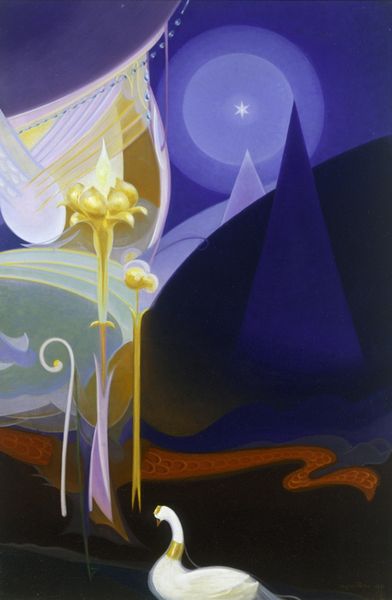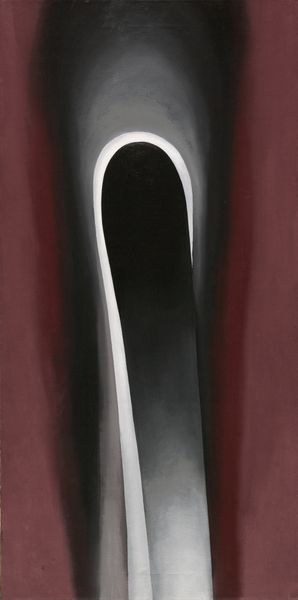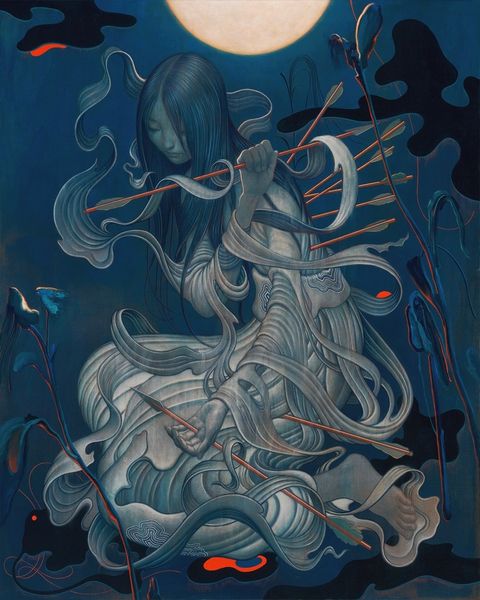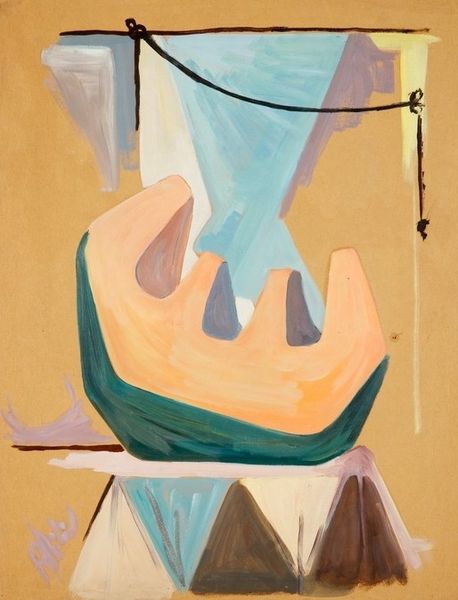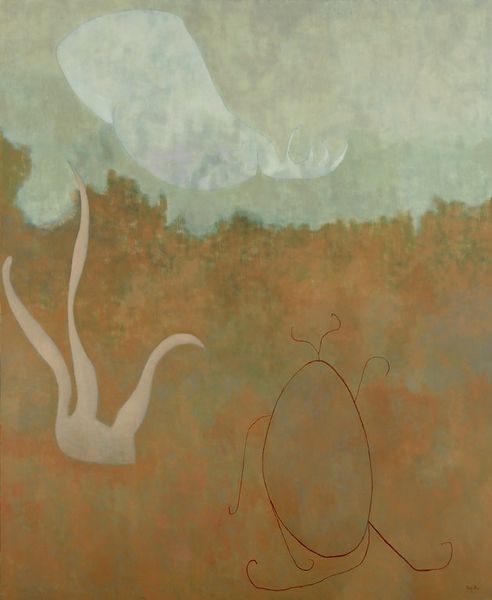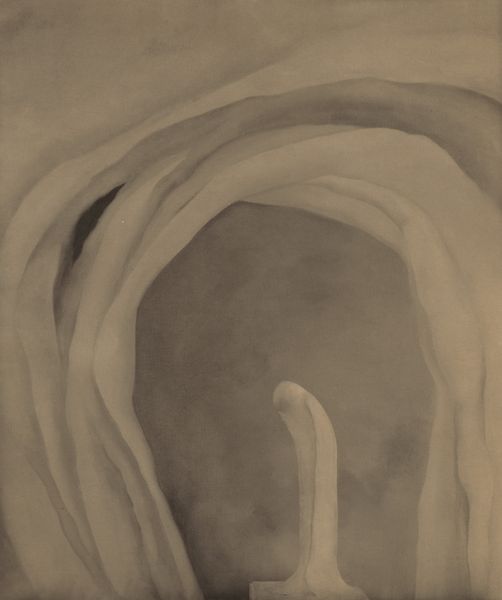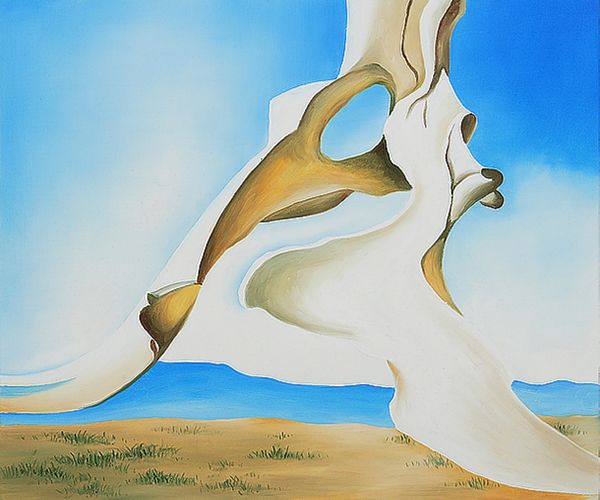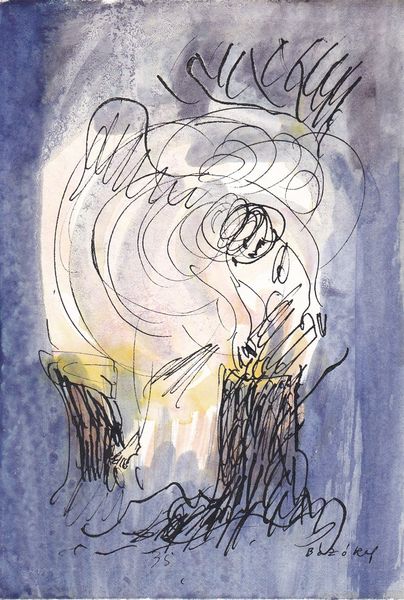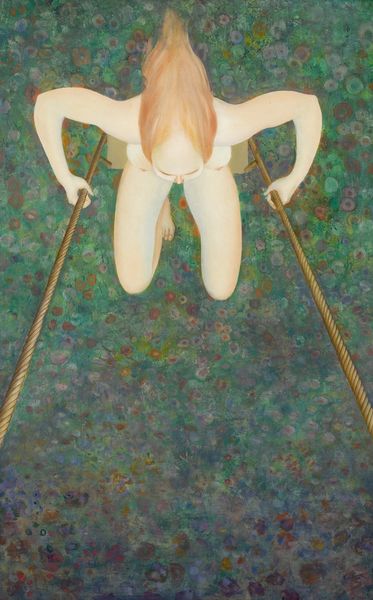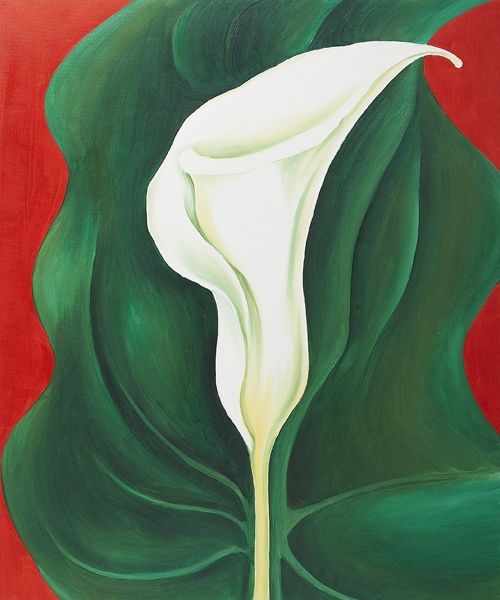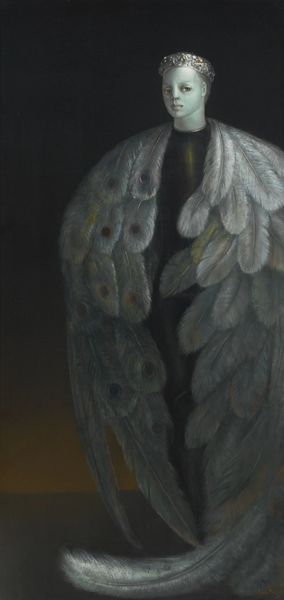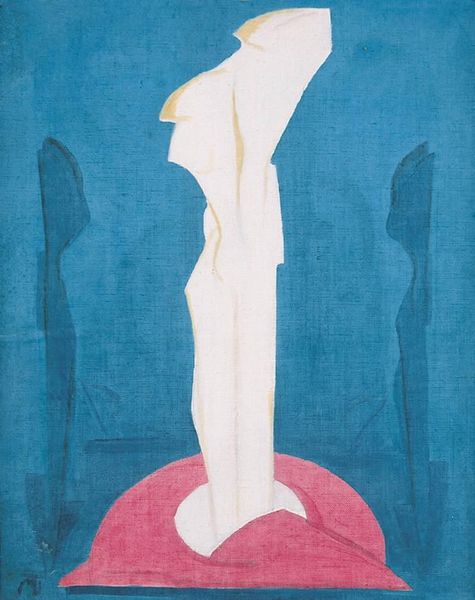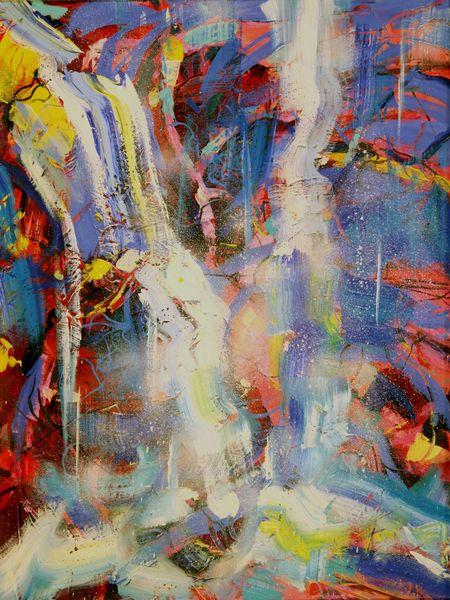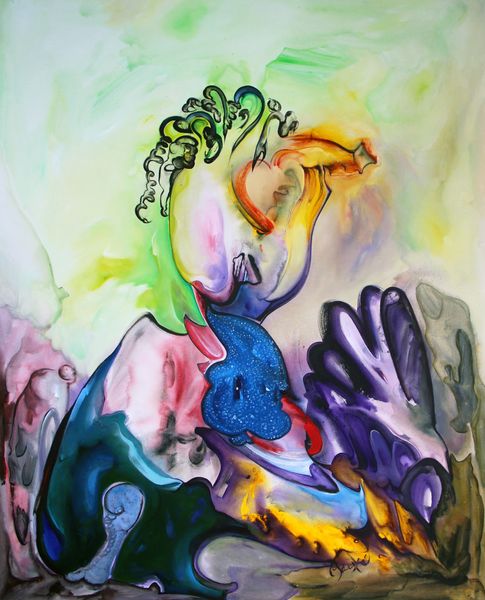
Copyright: Agnes Lawrence Pelton,Fair Use
Editor: So, here we have Agnes Pelton's "Fire Sounds" from 1930, created with oil paint. It’s definitely got this otherworldly vibe, like a dreamscape with those elongated shapes against the deep blue. I’m curious, what jumps out at you when you look at this piece? Curator: What immediately strikes me is how Pelton uses abstraction to convey complex spiritual ideas prevalent in the early 20th century. Abstraction isn't just about form; it's a deeply political and personal statement. Consider how women artists, often sidelined by patriarchal structures, embraced abstraction to circumvent traditional artistic canons that frequently centered male perspectives. Doesn’t this imagery resonate with certain archetypal notions of femininity? Editor: That's a really interesting point! I hadn’t thought about it that way. It definitely feels feminine in a subtle way – maybe it’s the curves and soft colours. But why do you call it a political statement? Curator: Because by stepping outside of representational art, Pelton challenges the very notion of whose reality gets represented and how. Think about the context – the rise of modernist movements, the suffrage movement, and the burgeoning interest in the occult. "Fire Sounds" speaks to all of that. It's Pelton asserting her own symbolic language, influenced by her spiritual beliefs, against a backdrop of societal constraints. Do you see how the light plays a part? Editor: Yes! It's ethereal, almost like an inner light. Curator: Exactly. It’s about an internal world, a reclamation of female interiority. What’s fascinating is that on the surface it can be a painting of an abstract landscape, however through understanding Agnes’ life it is charged with something much more poignant. Editor: Wow, I’m going to have to rethink how I approach abstract art. Thanks! Curator: And thank you for the insightful question, which reminds us that art is always interwoven with identity and cultural context.
Comments
No comments
Be the first to comment and join the conversation on the ultimate creative platform.
